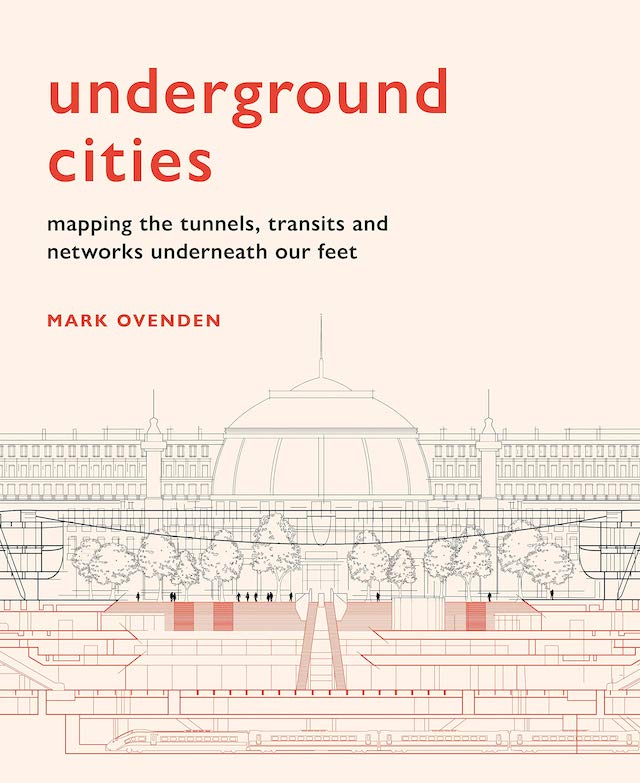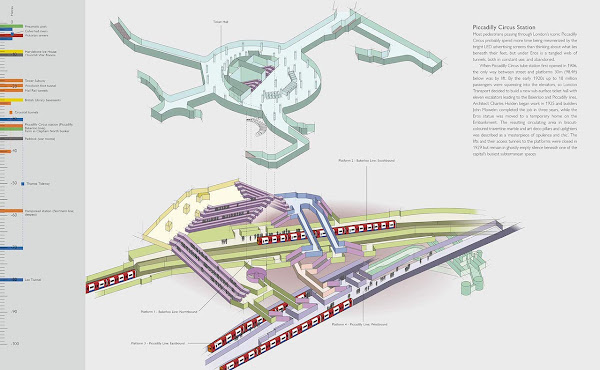Underground Cities
Underground Cities: Mapping the tunnels, transits and networks underneath our feet
Mark Ovenden
Frances Lincoln, September 2020
Hardcover | 9-1/4 x 11-/12 inches | 224 pages | English | ISBN: 978-1781318935 | $40.00
PUBLISHER'S DESCRIPTION:
REFERRAL LINKS:
SPREADS:
Mark Ovenden
Frances Lincoln, September 2020
Hardcover | 9-1/4 x 11-/12 inches | 224 pages | English | ISBN: 978-1781318935 | $40.00
PUBLISHER'S DESCRIPTION:
With over 60 per cent of the world’s population living in cities, the networks beneath our feet – which keep the cities above moving – are more important than ever before. Yet we never truly see how these amazing feats of engineering work.
Just how deep do the tunnels go? Where do the sewers, bunkers and postal trains run? And, how many tunnels are there under our streets? Each featured city presents a ‘skyline of the underground’ through specially commissioned cut-away illustrations and unique cartography.
Drawing on geography, cartography and historical oddities, Mark Ovenden explores what our cities look like from the bottom up.
Mark Ovenden is a British writer and broadcaster. At the age of seven, he travelled alone ten miles on the London Underground, armed only with a map. He later gained entry to a Graphic Design course by submitting a reworking of the London tube map. His previous books are Transit Maps of the World, Great Railway Maps of the World, Metro Maps of the World, Paris Metro Style and London Underground by Design. He is a Fellow of the Royal Geographic Society.
REFERRAL LINKS:
"Transit geek" is not a phrase I lob at people readily, but Mark Ovenden, author of Transit Maps of the World is definitely one. He calls himself just that in the introduction to the recently published Underground Cities, an examination of the human-made structures that sit beneath 32 cities on five continents. While the transit geek label might point to a book about 32 subway systems, Underground Cities is much more than that, since it digs deep beneath cities to reveal what lies buried, be it tunnels for transit or sewers, or underground vaults for burying the dead or even storing cheese.
A couple cities, two I know best, can serve as examples for the whole book. Chicago is known for its elevated "L," not subways, but it yields many treats for subterranean urban explorers of the armchair variety. Ovenden does describe how Chicago built subways — yet without tearing down its elevated lines, unlike other cities — but not before discussing the "city's unplanned and mismanaged early years." The 19th-century developments include raising of the city by about six feet starting 1858, which created a new grade level above new sewers, and tunnels for freight and transit under the city and Chicago River, all of which were eventually abandoned and sealed off. Most fascinating are the tunnels that remain: the water tunnels and "cribs" built miles into Lake Michigan to bring clean water to the city's residents and the extensive Pedway network that links many buildings in and beyond the Loop.
New York City, on the other hand, is known for its subway system: 424 stations, by Ovenden's count, with 281 of them underground. (In addition to his book of transit maps, Ovenden also co-wrote a book dedicated to Massimo Vignelli's maps of the NYC subway.) The author goes into some depth on the subways, from its predecessors and early days to the recently completed stations on the Second Avenue line and even abandoned subway stations. He also describes steam tunnels and a few "quirky underground spaces," including the Doyers Street tunnel in Chinatown, the catacombs beneath Old St. Patrick's in SoHo, and the cheese stored in former "lagering tunnels" in Brooklyn. That's a lot to cover in just ten pages, meaning many descriptions are short, just enough to pique the reader's interest.
The underground cities in Underground Cities are described through a combination of four media: Ovenden's text, heavy on history but very descriptive; photographs, most of them historical; specially made maps that are consistently drawn; and cutaway illustrations that highlight some of the most unique subterranean places. Accompanying the last, which often consists of subway tunnels and platforms but also other spaces carved from the earth, are vertical markers along the left edge of the page (see first and last spreads below). Here, color-coded rectangles indicate how deep subways, sewers, and other pieces of infrastructure are located beneath ground level. Deepest in the book are the off-the-chart Ramenki bunker in Moscow ("supposedly" -200 meters), the Molnár János Cave in Budapest (-150m to -250m), and the Tunel Emisor Oriente (-150m) and drainage tunnels (up to -250m), both in Mexico City. With such depths plumbed by Ovenden, transit geeks won't be the only ones liking this book.
SPREADS:








